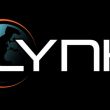FCC requires digital tuners for TVs
TV stations need not vacate 700 MHz channels until 85% of TV households in a given market has digital TV reception
In a move that may improve prospects for using the 700 MHz band for two-way radio communications, the FCC has adopted a plan to require off-air digital TV (DTV) tuners on nearly all new TV sets by 2007. The FCC believes that by enacting a five-year rollout schedule that starts with larger, more expensive TV sets, its action would minimize the costs for equipment manufacturers and consumers.
The FCC believes that DTV receivers are a necessary element of broadcast TV service in the same way that analog TV receivers have been since the inception of analog television service. Although analog receivers remain dominant, the government agency believes that will change as the transition to digital TV progresses.
The FCC said that its jurisdiction is established by the 1962 All Channel Receiver Act (ACRA), which provides the FCC with the “authority to require” that television sets “be capable of adequately receiving all frequencies” allocated by the FCC for “television broadcasting.” The authority provided under the ACRA applies to all devices used to receive broadcast television service, not just those used to receive analog signals. The FCC said the plan reflects and accounts for the following:
-
Including DTV reception capability in new television receivers will require the redesign of product lines.
-
Prices are declining and will decline even faster as economies of scale are achieved and production efficiencies are realized over time.
-
Prices of large TV sets have been declining at a rate of $100 to $800 per year, so the additional cost of the DTV tuner may be partially or completely offset by the general price decline.
The FCC said this plan will ensure that new TV receivers include a DTV tuner on a schedule as close as economically feasible to the Dec. 31, 2006, target completion date for the DTV transition that was set forth in the Communications Act by Congress.
The Second Report and Order and Second Memorandum Opinion and Order adopted by the FCC on Aug. 8 requires that all TV receivers with screen sizes greater than 13 inches and all TV receiving equipment, such as videocassette recorders (VCRs) and digital versatile disk (DVD) players and recorders, will be required to include DTV reception capability after July 1, 2007, according to the following schedule:
- Receivers with screen sizes 36 inches and above
— 50% of a responsible party’s units must include DTV tuners effective July 1, 2004; 100% of such units must include DTV tuners effective July 1, 2005.
- Receivers with screen sizes 25 to 35 inches
— 50% of a responsible party’s units must include DTV tuners effective July 1, 2005; 100% of such units must include DTV tuners effective July 1, 2006.
- Receivers with screen sizes 13 to 24 inches
— 100% of all such units must include DTV tuners effective July 1, 2007.
- TV Interface Devices
(such as VCRs and DVD players and recorders that receive broadcast television signals) — 100% of all such units must include DTV tuners effective July 1, 2007.
The FCC declined for the time being to adopt labeling requirements for TV receivers that are not able to receive any over-the-air broadcast signals. The FCC stated that it is unclear when, or if, such products would become commercially available or how they will be marketed. The FCC said that it would continue to monitor the state of the marketplace and take additional steps if necessary to protect consumers’ interests.
The FCC’s action also amended the FCC rules to reference the most recent version of the Advanced Television System Committee’s (ATSC) DTV standard. The FCC also stated that it would address the possible adoption of the ATSC’s “Program System and Information Protocol” (PSIP) specification in its forthcoming Second Review of its policies for the DTV transition. In the interim, the FCC included the PSIP specification in its rules as a document that licensees may consult for guidance.
The FCC’s action also denies a petition for reconsideration requesting that the FCC consider imposing minimum performance thresholds for DTV receivers. In reaffirming its previous decision on this issue, the FCC said that competitive forces are the best approach for ensuring that DTV receivers perform adequately and meet consumer needs in terms of price, quality, performance, and features.















